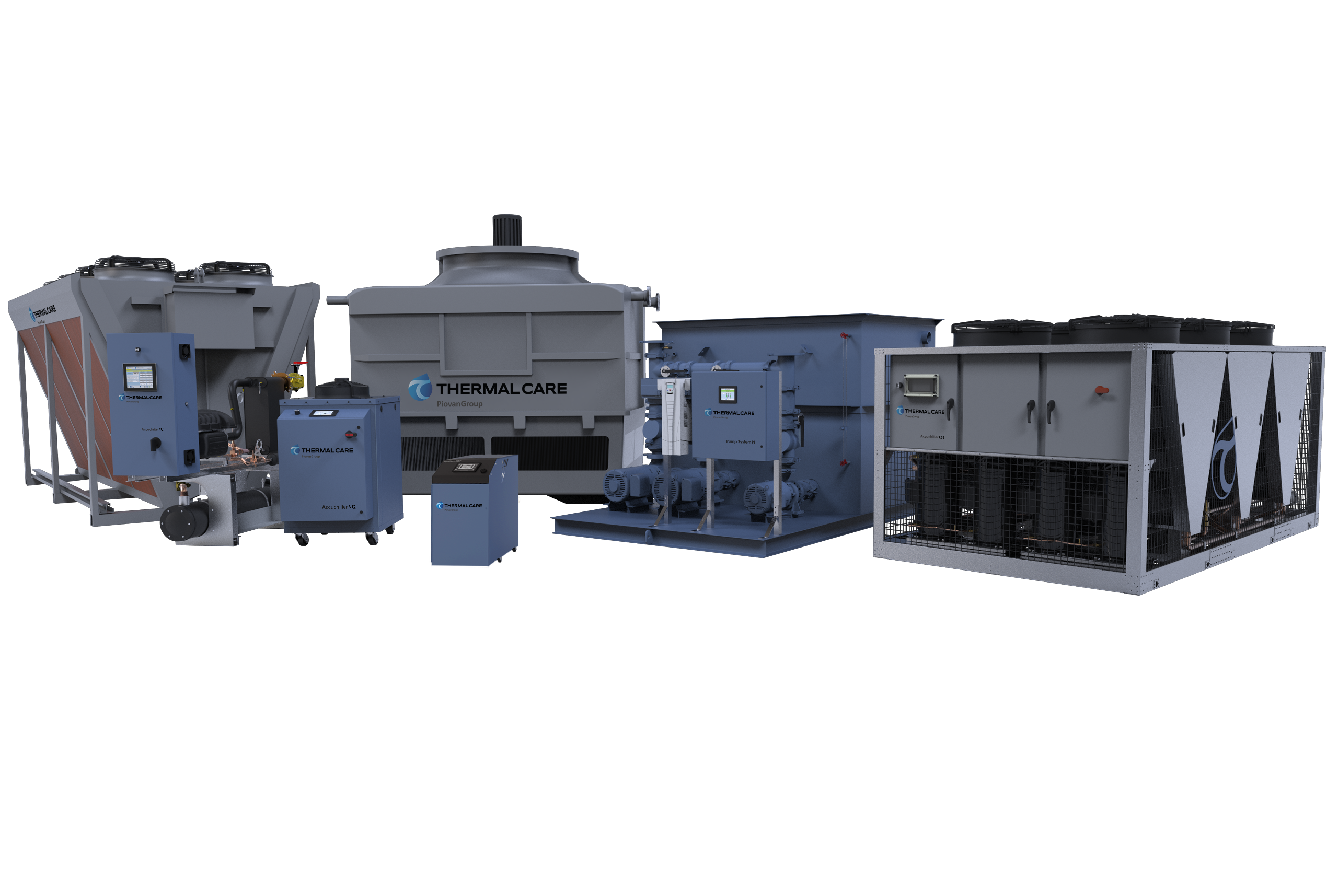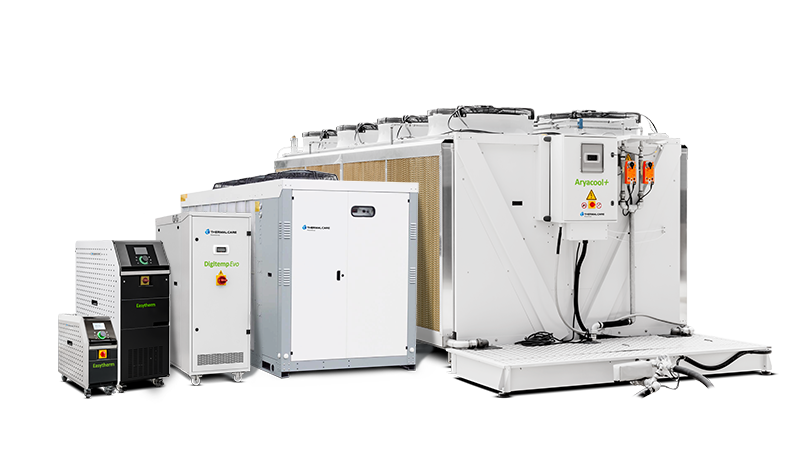How does a chiller work?
In most process cooling applications, a pumping system circulates cool water or a water/glycol solution from the chiller to the process. This cool fluid removes heat from the process and the warm fluid returns to the chiller. The process water is the means by which heat transfers from the process to the chiller.
Process chillers contain a chemical compound, called a refrigerant. There are many types of refrigerant and applications depending on the temperatures required but they all work on the basic principle of compression and phase-change of the refrigerant from a liquid to a gas and back to a liquid. This process of heating and cooling the refrigerant and changing it from a gas to a liquid and back again is the refrigeration cycle.
The refrigeration cycle starts with a low-pressure liquid/gas mix entering the evaporator. In the evaporator, heat from the process water or water/glycol solution boils the refrigerant, which changes it from a low-pressure liquid to a low-pressure gas. The low-pressure gas enters the compressor where it is compressed to high-pressure gas. The high-pressure gas enters the condenser where ambient air or condenser water removes heat to cool it to a high-pressure liquid. The high-pressure liquid travels to the expansion valve, which controls how much liquid refrigerant enters the evaporator, thereby beginning the refrigeration cycle again.
There are two types of condensers used in chillers; air-cooled and water-cooled. An air-cooled condenser uses ambient air to cool and condense the hot refrigerant gas back down to a liquid. It can be located inside the chiller or can be remotely located outside, but ultimately it rejects the heat from the chiller to the air. In a water-cooled condenser, water from a cooling tower cools and condenses the refrigerant.
What is a Chiller ?
Industrial water chillers are used in a variety of applications where chilled water or liquid are circulated through process equipment. Commonly used to cool products and machinery, water chillers are used in a multitude of different applications including injection molding, tool and die cutting, food and beverage, chemicals, lasers, machine tool, semi-conductors and more.
The function of an industrial chiller is to move heat from one location (usually process equipment or product) to another place (usually the air outside the manufacturing facility). It is very common to use water or a water/glycol solution to transfer the heat to and from the chiller, which may require the process chiller to have a reservoir and pumping system. Regardless of your industry and process, making sure that you have sufficient cooling is critical to productivity and cost savings.
Why use a Chiller ?
No industrial process, machine, or motor is 100% efficient, with heat being the most common byproduct of those inefficiencies. If this heat is not removed, it will accumulate over time causing reduced production times, equipment shutdowns, and even premature equipment failure. It is necessary to incorporate cooling into industrial process system design to avoid these issues.
Using a chiller to provide cooling has multiple benefits. A chiller provides consistent temperature and pressure to your industrial process. Eliminating temperature and pressure variables simplifies the process development and optimization, ensuring the highest quality product. Instead of a wasteful, single-pass-through system, a chiller recirculates the cooling water. The recirculation minimizes the cost of water consumption which can be expensive and environmentally unfriendly.

What Chiller Works Best for Your Process?
Chiller systems range vastly in size and design and are available as small, localized or portable chiller units for smaller applications or large central chillers designed to provide cooling for entire processes.
If you are interested in more details on the best cooling solution for your application please contact a Thermal Care specialist.




